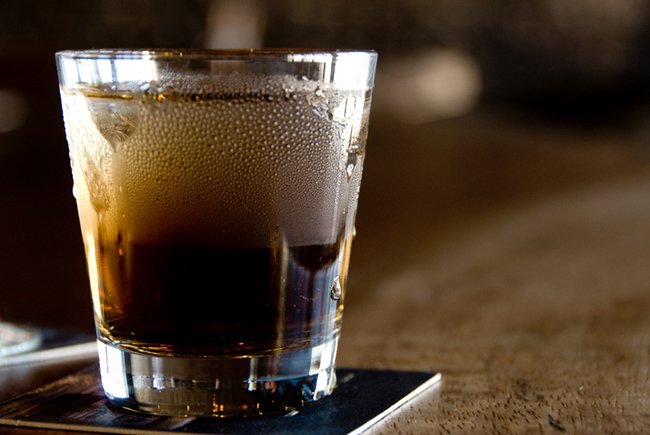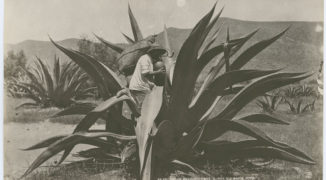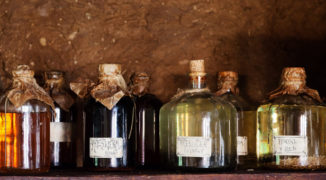Was it a fussy housewife or a savvy designer who first thought, “Hmm, best find a place to set my sweaty drink upon”? Turns out, it was neither. In the 19th century, felt or pieces of fabric were used in pubs, not to soak up condensation, but to cover drinks and ward off bugs and dirt from those precious pints. The material was absorbent, but it was also reused, which wasn’t exactly sanitary (high-efficiency washing machines having not yet been invented). A better solution was necessary.
Friedrich Horn, a German printing company, gets the credit for developing the first disposable, cardboard, punch-out “beermats” circa 1880. Just a few years later, another German, Robert Sputh, patented his beermat made of a far more sturdy wood pulp. A more efficient production technique for beer mats began around 1900, and they were usually emblazoned with the printer’s name. It didn’t take long for eager early brewery marketers to start branding these handy surface-savers with advertisements for pale ales, stouts and the like.
Promotion via coasters has morphed to suit each generation, and not just to publicize distilleries or breweries. Lori Dahl, a mixologist at Hotel Viking in Newport, Rhode Island, says the hotel is making new coasters that proclaim “Be Social at Hotel Viking.” Instead of pushing mixed drinks or desserts, drink coasters have now been elevated to proclaimers of social media handles.
From One Tegestologist to Another
The pulpboard that today’s common drink coasters are made of are available in different weights or thicknesses, and are ultimately designed with the main goal of making a bartender’s life far less tedious. The thicker the coaster, the more moisture that’s absorbed, and the less need to clean up soaked, torn paper napkins. Coasters don’t automatically stunt the mess though. Dahl admits her pet peeve is “when people tear coasters apart and leave the mess on the bar.” Be nice to your bartender! And your coasters!
But plenty of people have an appreciation for beverage coasters that goes beyond mere condensation catcher – they’re known as tegestologists, collectors of coasters. These avid coaster lovers may snag a coaster because of its historical or social significance. Others find the coaster hunt to be the best part of their tegestology practice.
“My husband and I travel extensively and collect drink coasters from around the world,” says Pamela Braun of My Man’s Belly. “The majority are from beers we’ve tried so the coasters not only have meaning from where they are but also of an experience we’ve had.” One of their favorite coasters features a Belgian beer called La Chouffe with its adorable gnome logo. “We first had the beer at an out-of-the-way bar in Amsterdam and always look out for the little gnome, trying the different varieties of this brand in some of the countries we’ve been in. But we were only able to get the coasters in Amsterdam,” says Braun. With a coaster collection numbering in the hundreds, Braun and her husband stash most in a designated drawer but give their most beloved beermats a second life in – where else? – the bar area of their home.
Bar manager of the Bit House Saloon in Portland, Oregon, Jesse Card tells the tale of an international airline pilot whose passion is finding obscure coasters. “He has thousands of them. His crown jewels are coasters from Belgian Abbeys and hard-to-reach breweries in Japan. I asked him why he collected coasters instead of steins or the bottles themselves and he told me, ‘Simple – because the coasters are free.’”
The title of master tegestologist, however, goes to Leo Pisker of Austria who The Guinness Book of World Records lists as having amassed a collection of over 150,000 different coasters from over 160 countries.
Not Your Mother’s Drink Coaster
By the middle of the 20th century, beverage coasters tip-toed out of pubs and bars into domestic situations and now feature prominently in homes, whether ceramic, acrylic, felt, tempered glass, tile, silicone, or wood. And, naturally, you can find quirky coasters, like a sliced-up Rubik’s cube, mini pallets, or toast-shaped platforms made of natural cork. A hardcore collector might even be able to whip out a coaster made of shotgun shells.
While bar coasters are as ubiquitous as liquor – it’s estimated that close to 5.5 billion beer mats are produced annually in North America and Europe – there are plenty that give bar tops some frosting, whether by their unusual shape (a cloud or star as opposed to the traditional square or circle) or their printed message. From political ads to sporting event promos to public service announcements, drink coasters are an affordable advertising tool for any company, bar, or individual.





